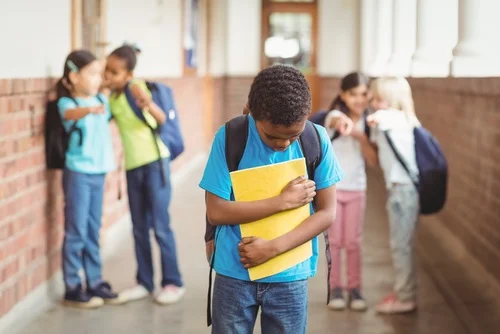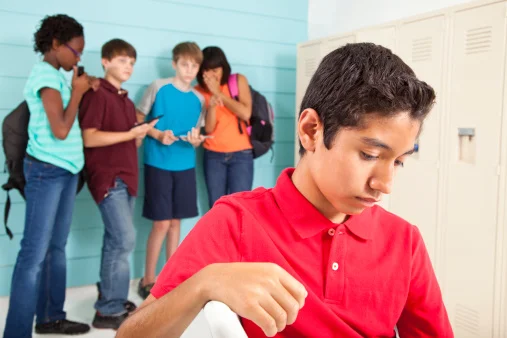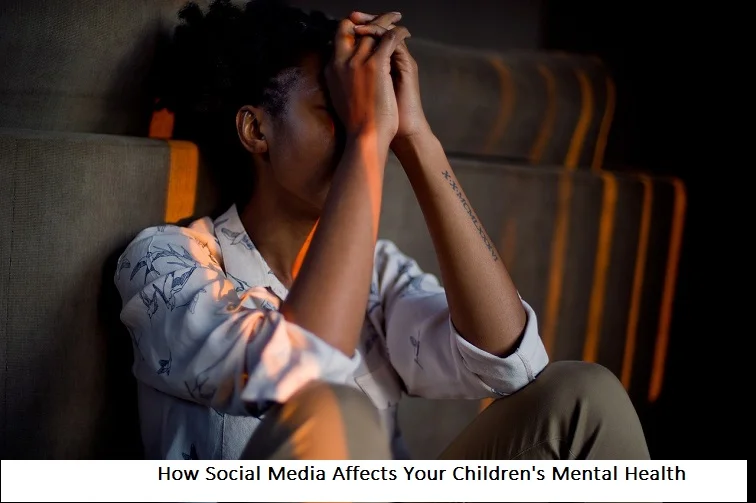+1 845 259 2974 (11 a.m to 7 p.m CST)
Guide for Teachers: Main Causes of Bullying in School

Bullying in schools is not just about occasional conflict, it's a serious issue that impacts students' mental and physical well-being. It involves deliberate intimidation, and can be physical, verbal, or digital. When students face bullying, they may feel isolated, scared, and insecure, which can affect their learning and social development. This is why understanding bullying is crucial for every teacher.
Addressing bullying is not just about stopping negative behaviors, it's about creating a culture of respect and safety. A school that actively fights against bullying shows its commitment to every student's success and well-being. This effort requires recognizing the signs of bullying, understanding its effects, and taking proactive steps to prevent it. By prioritizing a bully-free environment, teachers can ensure that school is a place where every student has the opportunity to thrive without fear, making education a positive and enriching experience for all.
Recognizing the Signs of Bullying
Recognizing the signs of bullying is key to stopping it. Physical bullying includes hitting, kicking, or any form of physical aggression. It's often the easiest to spot, but the scars might be more than skin deep, affecting the victim's psychological well-being.
Verbal bullying involves insults, name-calling, and threats. It can be direct or behind someone's back, damaging a person's self-esteem and sense of security. Teachers should listen for harmful language and observe students' interactions closely.
Cyberbullying happens online, through texts or social media. It's particularly insidious because it can follow students' home. Warning signs include sudden changes in device usage, secrecy about online activities, and emotional distress during or after using the internet.
Social bullying, or relational aggression, involves excluding someone or spreading rumors. It's subtle, targeting a person's relationships and social standing, which can be devastating for adolescents. Teachers can spot this through changes in social groups and isolation of students.
Creating a Safe Classroom Environment
Creating a safe classroom environment is essential in preventing bullying. This starts with setting clear rules against bullying. Teachers should outline what behaviors are unacceptable, emphasizing respect and kindness. These rules need to be consistently enforced, with clear consequences for bullying.
Promoting inclusivity and respect is another crucial step. Teachers can foster an inclusive atmosphere by celebrating diversity and encouraging students to share their experiences and perspectives. Activities that promote teamwork and understanding can help build empathy among students.
The classroom layout and supervision also play a significant role. Arranging desks and seating to minimize isolated spots and maximize visibility can deter bullying behavior. Effective supervision means being present and attentive, not just physically but also emotionally available to students. Teachers should strive to create an environment where every student feels seen, heard, and valued, making the classroom a safe place for learning and growth.
Strategies for Preventing Bullying
Preventing bullying involves proactive strategies that foster a positive school culture. Teaching empathy and social skills is fundamental. Educators can incorporate lessons that help students understand and respect different perspectives. Role-playing and group discussions can be effective in developing empathy, teaching students to recognize and respond to others' feelings constructively.
Encouraging peer support and bystander intervention is another vital strategy. Students should be taught that standing by silently can reinforce bullying behavior. Training them to safely intervene or seek help can empower them, reducing incidents of bullying. Creating a buddy system or peer mentoring programs can also promote a supportive community where students look out for one another.
Implementing anti-bullying programs is a comprehensive approach. These programs educate the entire school community—students, staff, and parents—about bullying's dynamics and effects. Effective programs offer strategies for prevention and intervention, fostering a united front against bullying. Regular workshops, assemblies, and awareness campaigns can keep the anti-bullying message strong, ensuring a safe and respectful environment for all students.
Handling Bullying Incidents
Handling bullying incidents requires a careful and decisive approach. First, it's important to address the incident promptly. Teachers should listen to the victim's account, gather information from witnesses, and document everything. Ensuring the victim's safety is the immediate priority.
Supporting the victim involves more than just addressing the immediate incident. It includes providing emotional support and strategies to cope with bullying, such as confidence-building activities and counseling if needed. Creating a support network within the school can also help the victim feel less isolated.
Addressing the bully is also crucial. This doesn't just mean punishing them; it's about understanding the reasons behind their behavior and helping them change. Counseling and behavior modification programs can be effective. Setting clear consequences for bullying behaviors and consistently enforcing them sends a message that bullying is not tolerated.
Working with parents and guardians of both the victim and the bully is essential. Open communication can lead to understanding the broader context of bullying and finding a long-term solution. It's important to involve parents in the process of addressing bullying, ensuring that they're aware of the situation and how it's being handled, and enlisting their support in reinforcing anti-bullying behaviors at home.
Building a Whole-School Anti-bullying Culture
Building a whole-school anti-bullying culture requires a comprehensive approach that involves everyone in the school community. Training for staff on bullying prevention is a crucial first step. This training should cover recognizing the signs of bullying, intervention strategies, and how to support both victims and bullies. Educating staff enhances their confidence and effectiveness in dealing with bullying incidents.
Involving students in anti-bullying initiatives is equally important. This can be done through leadership roles in peer support programs, participation in anti-bullying campaigns, or by giving students a voice in developing anti-bullying policies. Empowering students encourages a sense of responsibility and ownership over the school's culture, making them active participants in creating a safe environment.
Regular monitoring and evaluation of anti-bullying efforts are necessary to ensure their effectiveness. This can include surveys to gauge the school climate, tracking incidents of bullying, and assessing the outcomes of interventions. Feedback from students, staff, and parents can provide valuable insights into areas that need improvement. By continually assessing and refining anti-bullying strategies, schools can adapt to changing needs and ensure that all students feel safe and supported.
Preventing bullying in schools requires a dedicated and multifaceted approach. By recognizing the signs of bullying, creating a safe classroom environment, implementing effective prevention strategies, handling incidents appropriately, and building a whole-school anti-bullying culture, teachers can make a significant difference.
Also, parents and teachers use monitoring apps to make sure that nothing unusual is happening around. It's about more than just stopping negative behaviors; it's about fostering an environment where every student feels safe, respected, and valued.























